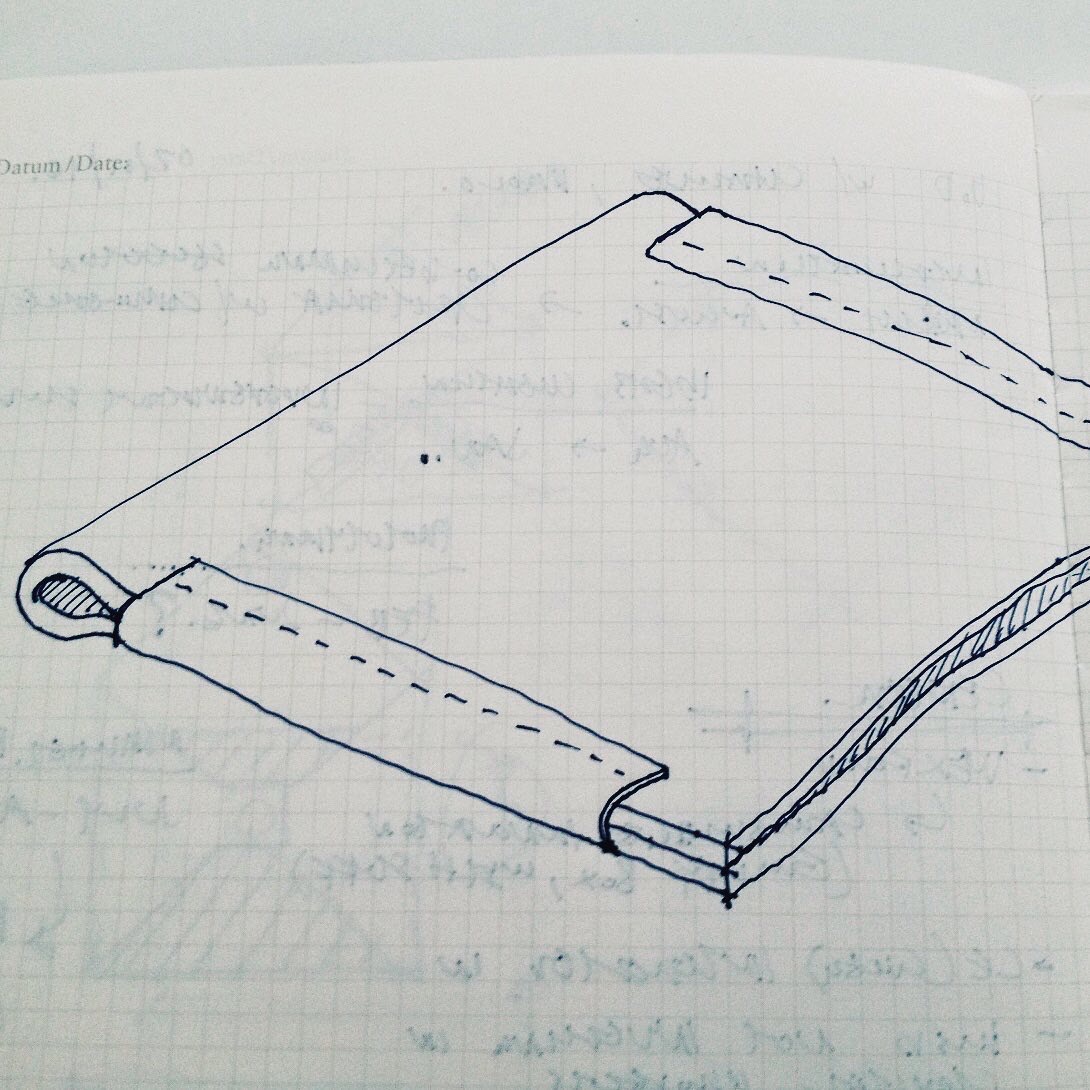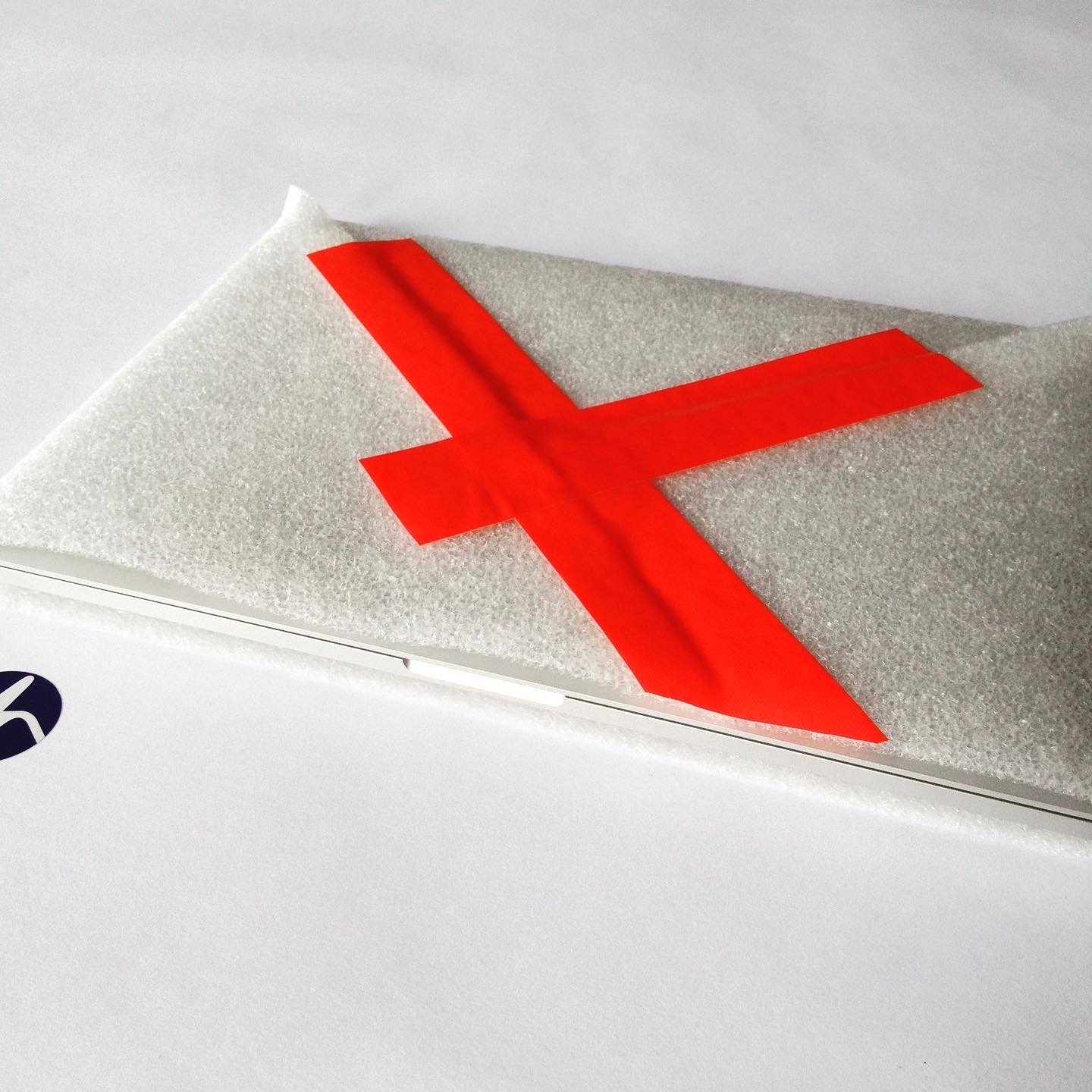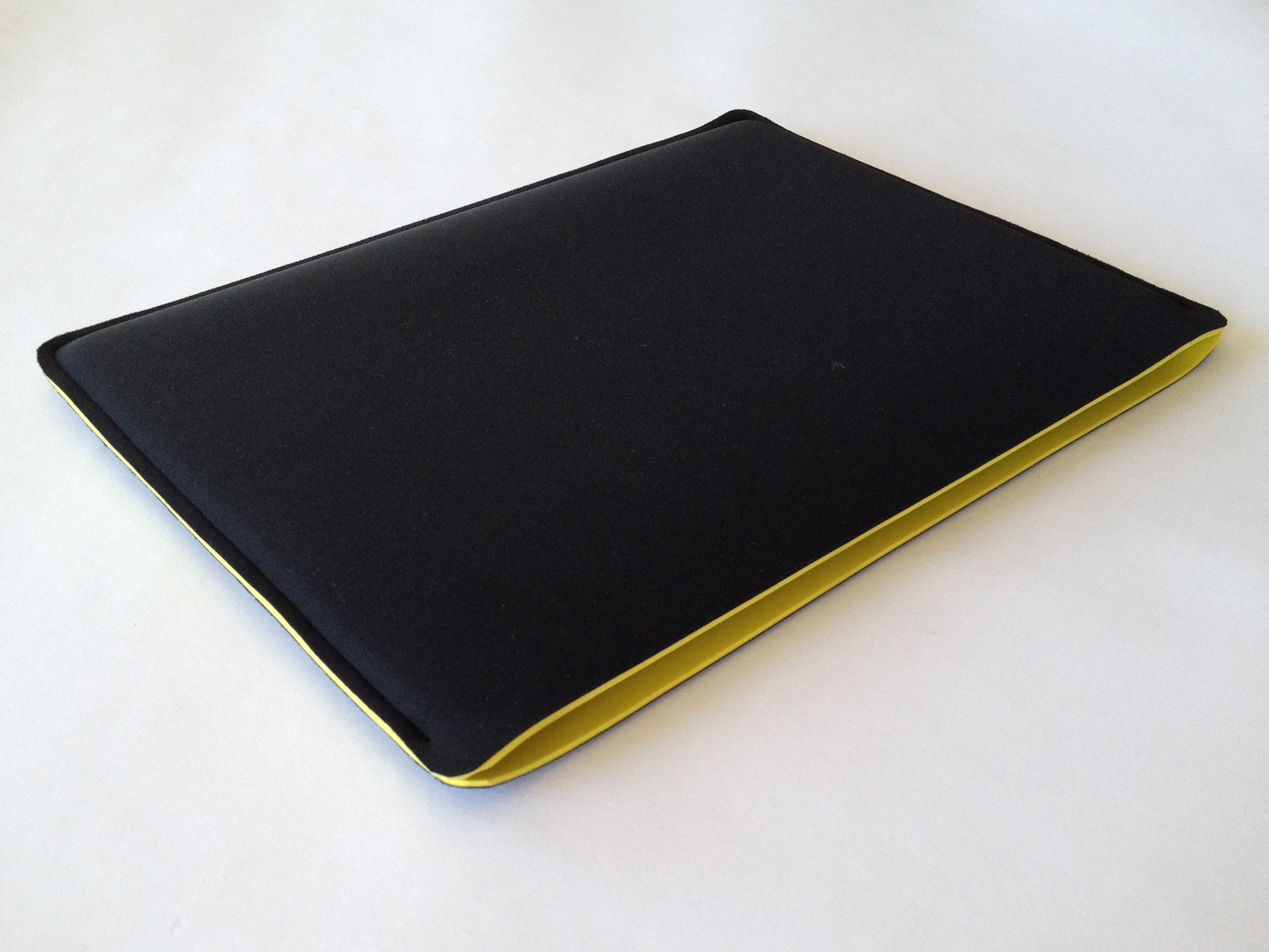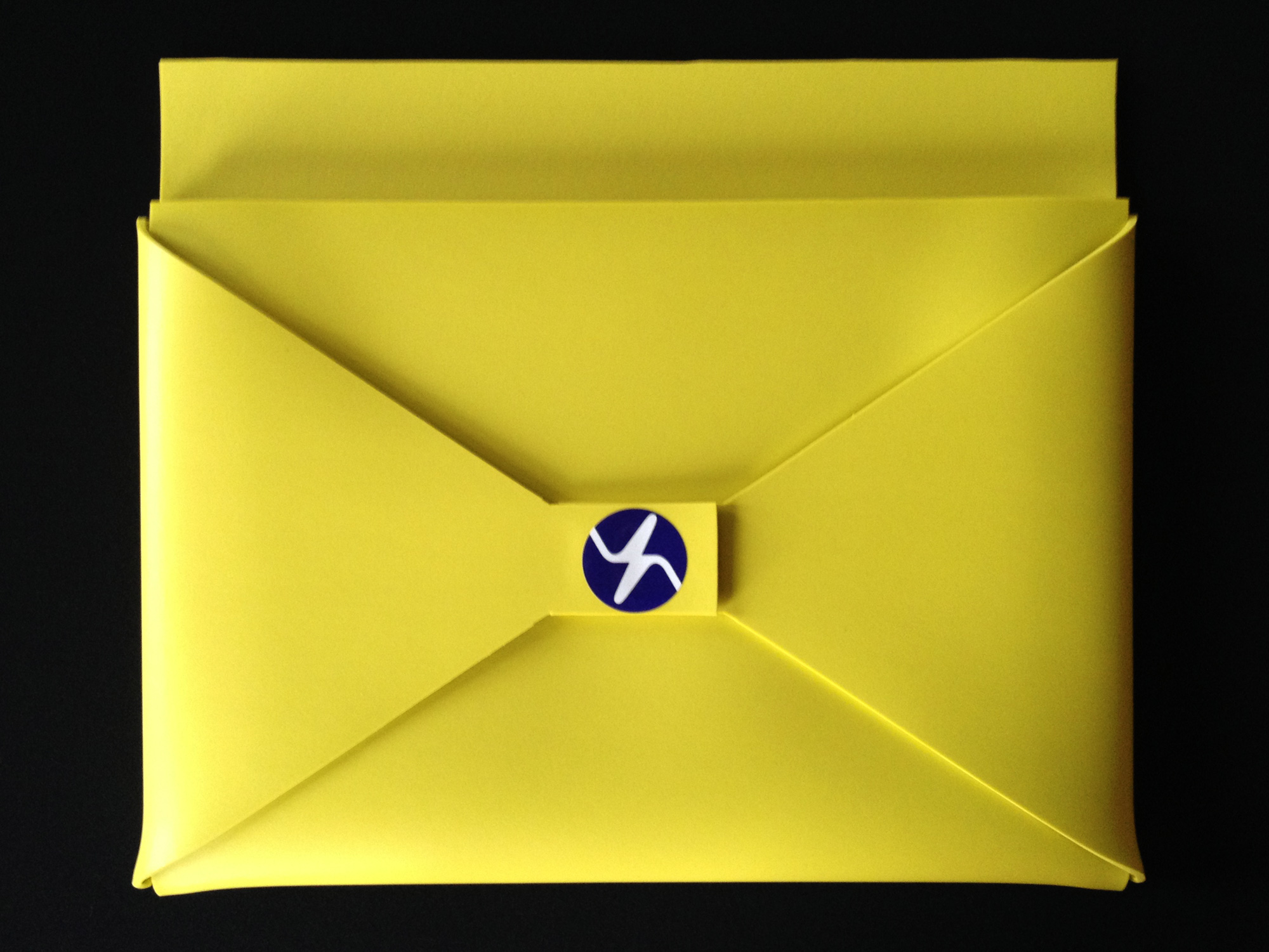
We invest so much in our laptops, tablets and phones, and yet the slipcases that are designed to protect these devices are very disappointing. The cases that perform best are often bulky and graceless. Why is that? Can’t we design slipcases that effectively absorb impact, whilst matching the elegance of the valued property that they protect?
This was a question that Kikkerland asked us, as we set into designing a series of slipcases for them with Tucker Viemeister at Viemeister Industries. The brief was simple: create a series of beautiful slipcases for laptops and tablets that provide great impact protection. The slipcases had to be elegant in form and feel, elegant in material performance and efficiency, elegant in use and durability, and elegant in terms of production optimization. Also … it had to be affordable!! This is the kind of collaborative exploration that we love to undertake.
Our first prototype, shown above, was a simple foam wrap that was just a folded rectangle with two edges adhered. It was beautifully snug so that no closure was needed, which took a while to tailor. Our materials research focused on various outstanding rate-dependent foams that we had experience with. Slightly stretching the slipcase to fit a device caused the foam to become thinner (Poisson Effect), marginally changing its effectiveness at absorbing impact.
We worked with a US manufacturer who we had collaborated with before. For a short period of time, we considered a material that was produced by a foreign competitor, but their foam was not as effective at absorbing impact. We studied thicknesses, densities, and then skyved surface topographies. Most of the prototypes shown here were made in our studio, where we also created a test bench with three sensors to measure impact absorption.
Another challenge was finding the right adhesive for the edging, which was more difficult than we banked on. 3M VHB worked all right (it’s a favorite that we have used to make dielectric elastomers), and there were a couple of other adhesives that we discovered could bond and match the stretch/strain. But VHB tape was too expensive for our application, and the glue alternatives presented production issues.
So, we switched to sewing the edges, which required a fabric-bonded foam sheet, because the foam can’t be sewn in a way that would be durable. These new prototypes were made in our studio in Downtown Brooklyn, and at the Brooklyn Design & Fashion Accelerator; later, we worked with a soft goods manufacturer at the BAT (Brooklyn Army Terminal) in Sunset Park. Love the BAT!
Achieving nicely sewn edges continued to be a challenge, and costs needed to be trimmed further, but not by a lot. We were committed to some profits going to support writers, through Kikkerland’s “Writers Blok” initiative; so additional cost reductions would help make a difference. After discarding a straight ribbon edge approach, the final iterations looked at no sewing, and no adhered edges … just cut the foam, fold it, and add one adhesive patch to finish. This was still too expensive, so the project did not advance toward production.
We’ve been using some of the prototypes, daily, for years now. They’re performing well and have lasted. We also discovered that the fabric slipcases can be used as a large mousepad, while working. There’s a new version that we’d like to make in 2021, just for ourselves.








